Today SevenPonds speaks with Camella Nair, a yoga teacher and swami born in England and based in California, about her spiritual journey through yoga over the past 30 years. Camella is certified in death midwifery and certified as an Ayurvedic health educator and a Ayurvedic yoga teacher. Camella shares her insights on the yogic path and accepting impermanence.
Ellary: Camella, you are a yoga teacher and a swami. Can you explain what a swami is?
Camella: Well a swami is supposed to be one who’s practicing self awareness all the time. It’s something that I got into as my studies were deepening and I was studying at the Temple of Kriya Yoga and I decided I wanted to go through the seminary. Becoming a swami was part of that, but a lot of the training was actually in coming to terms with death and dying. You know, [these are] the subjects that people don’t really like talking about much, even in the yoga community, where it’s supposed to be quite a big thing that we’re supposed to be looking at.
Ellary: Where is the Temple of Kriya yoga?
Camella: It’s in Chicago.
Ellary: And why do you say that in the yoga community death and dying is something that you’re supposed to be looking at?
Camella: Well, without getting sort of too technical and all the rest of it, there are some obstacles that as yoga people, as yogis, we’re supposed to be looking at, obstacles that get in the way of our enlightenment. We come into the world needing to feed our sense organs, and we sort of forget what it was what we came for at the very beginning. We start to develop an ego personality. An ego personality’s fine, we just need to sort of modify it somewhat. We create our lives based on things that we like, things that we don’t like, and develop prejudice and loyalty and things like that. And then of course when it comes to the sunset years of our lives, we’re supposed to be preparing for the next lifetimes, actually, probably seven lifetimes.
But most people don’t even like to talk about the subject of death and dying, though there’s no greater time to do it really than when we’re healthy. And so the last big obstacle that yoga people and actually everybody has to come to terms with is our mortality, and the temporality of the physical body. We all cling to it, we know that by how we try to prolong life at any cost. So it’s a big piece. And it’s great that we have so many people practicing yoga in this country, but they’re all concerned with being bendy, strong and all that kind of thing. It’s good to want wellness in our lives and to be healthy and everything, but there’s a huge piece that we’re still a little bit shy and reticent about looking at, and that is death and how we do cling to the body and want to take everything with us; it’s not possible. The only thing we have really is our memory track that seems to go on and on.
Ellary: You mentioned preparing for the next seven lifetimes. Where does the number seven come from?
Camella: It represents seven realms of consciousness. I was always taught that when you’re making your plan for your life, don’t just stay with this lifetime. Start to plan ahead, because everything takes time. On a mystical level, we can have anything that we want in life, we just have to be prepared to put the effort in to get it, to wait for it, because it takes time. We have to pay maybe some sacrifice, maybe make some sacrifice along the way; it’s not all instant mashed potatoes. Our society tends to want that more than anything. That’s why people want to take a pill rather than take care of their lives. Slow down, slow down the breath, rest more, play more, laugh more. They want to take a pill. Before you know it, you’ve got to take another pill to cancel out the side effects of the first pill, and it’s kind of a snowball effect, and we just can’t face the inevitable.
Ellary: What was your introduction to yoga?
Camella: Oh gosh, it was when I was about 16 or 17 in England. These were the days before sticky mats, and yoga music, and yoga clothes, and things like that, rock star yoga teachers. My mom just wanted me to go with her, so my mom actually introduced me to yoga. Shavasana was a big thing. This was in England, so it was cold in the winter, obviously. People would take pillows and sleeping bags and I would think, “What the hell is this that my mother’s taking me to?” I very quickly got into the practice of letting go and relaxation, and it was very different.
Now, there tends to be somewhat of a separation in the yoga community with people who are trying to differentiate fit-based yoga to therapeutic yoga, but we were brought up to think that it was all supposed to be therapeutic, and all part of an inclusion kind of modality. I used to study at a center that had people coming through with MS, Parkinson’s, and then drop-in classes as well. You didn’t say, “Well, this is a power yoga class and this is a gentle yoga class.” It was just do what you can. And then they had residential programs for people with special needs, but it was always part of the therapeutic modality in my universe.
Ellary: What was that center called?
Camella: It was the Yoga for Health Foundation, which sadly is not there anymore. It was founded by Howard Kent, and they were using a facility in the countryside. It was an old boys’ school, a private boys’ school, and then developers came in after a number of years. Despite the worldwide outcry, because [Kent] was quite famous, and what he was doing there with this therapeutic center was quite well-known, they just closed it down. That was in Ickwell in Bedfordshire. It was lovely, a really nice place. They had a yoga magazine called Yoga for Health, I think it was, and there weren’t like your usual bendy 20-year-old people doing some crazy, sexy pose on the front cover. It was a person in a wheelchair, a middle aged woman, an old man. That was my yoga, thank God.
Ellary: So the spiritual teachings and philosophy were a big part of the center?
Camella: Pranayama was a big part of the classes, and then we would do meditation at the end, probably about 10 minutes or something. But yeah, that was a big part of it, sitting and practicing Pranayama techniques as well as the asana.
Ellary: How did your mom get into it?
Camella: It’s one of those things. Sometimes we don’t know, we all have these likes, and very often we don’t know where they come from, but they come from perhaps previous lives. Why do you have two kids and one of them likes mint ice cream and the other one likes chocolate? Where does it stem from? Where does it come from? Past experiences that we assimilate and we start to develop an aversion or a like for something. I think it can last with lifetimes actually. I expect that she was probably a yoga person in a previous lifetime, or something like that. Who knows? When the door opens, we go through it or we don’t. She was very passionate about it, but she was into aromatherapy and natural healing and things like that as well when it was very sort of woo-woo and different. She’s still alive, she’s in her 70s and doing quite well. But yeah, it’s one of those things that wasn’t really a household word or anything. She was actually the one that gave me Autobiography of a Yogi.
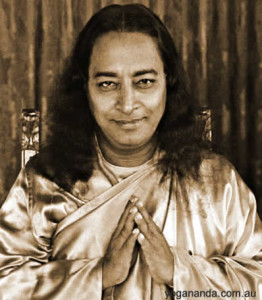
Paramahansa Yogananda, founder of Kriya Yoga and author of Autobiography of a Yogi
(Credit: yogananda.com.au)
Ellary: Was that a really impactful book for you?
Camella: Yeah, I think it was. I enjoyed it. It’s a little bit sort of out there, isn’t it? But that’s what people want, they want miracles. They don’t want, “This is what you need to do, you need to learn to stand on your own two feet, stop blaming everybody else.” They want a course in miracles, and someone to do it for them. Even in the yoga community, they want a teacher who’s going to give them a blessing, a diksha, and all of a sudden they’ve become enlightened. It doesn’t work like that. We’ve got to get a backpack, a rucksack with all the things in it, a sturdy pair of boots, and start climbing the mountain ourselves. We gain our own enlightenment, and wisdom, and compassion, and all the rest of it. It’s not easy, it’s not an easy path, but hopefully it becomes enjoyable knowing that we’re on some sort of path rather than just blowing around with no goal in life. That’s the sad part. A lot of the younger generation, they’re so lost because everything’s so hard for them. I mean nothing’s long term. When I first started working, people were in jobs for life. It doesn’t work like that anymore. It’s a very fragile economy where there isn’t that sense of security anymore.
Ellary: Right, there’s a lot of volatility. That’s something that yoga can help you hold space for.
Camella: Right, it’s all connected. How we breathe — shallow breathing creates erratic thoughts. I mean, I think we know it on an instinctual level. If we have a kid that comes in crying and screaming and sobbing, we say, “Slow, down. Just slow down.” We don’t have to be yoga people to know that. I think it’s just common sense. It’s just that we’re so busy in our lives that we kind of forget.
Ellary: Your yoga path started at a pretty young age. Is that something you’ve ever diverted from at any point and then come back to and recommitted?
Camella: Yeah I think so, because I got into the workplace; I was in marketing. Then I came back to yoga fully, and wanted to study more fully with a spiritual teacher. When my kids were very small, and when I came to California, it was just everywhere. I recognized pictures of Paramahansa Yogananda because he was such a presence here. I started reading, started studying and found a teacher. I think it deepened quite substantially some 20 years ago. There are times when we get spiritual indigestion, and we don’t feel quite so spiritual, quite so noble. That’s OK, but the thing is once you start, once you know that you need to be better, then there’s no getting out. We’re our own judge and jury. You say, “Well, I’ll try and do better next time.” We’re just human, after all.
Ellary: When did you start studying at the Temple of Kriya yoga?
Camella: Probably about 15 years ago.
Ellary: And what led you to Kriya yoga? What is Kriya yoga?
Camella: Kriya yoga is the only yoga that they talk about in the yoga sutras. It comes from the word “kri,” which means action. In book two of the yoga sutras, Patanjali says that yoga is Kriya yoga, which is the yamas and the niyamas, the things that we’re supposed to not do and do. The last of the three niyamas, the things that we’re supposed to cultivate in our lives, are things like self-study, self-discipline and an atunement to something other than ourselves. That just means that we’re not really the physical body; there’s something out there that’s quite marvelous and wonderful. It hasn’t got a name, it hasn’t got a form, but it’s part of us intrinsically. So Kriya yoga is self-discipline, self-study and an awareness that there is something quite magical in the universe that permeates everything.
Ellary: Do you think that you really need to tap into that and integrate that belief, that mystery?
Camella: I’m continually thinking about that. I’m the master of my own universe. If anything’s not going right in my universe, it’s my own fault. It’s my unawareness that probably caused the problem in the first place. But it gives us tools to do things better next time if we want to. That’s the difference between someone who wants to walk the path consciously as opposed to somebody who’s unconscious and who doesn’t really have a spiritual path at all. Sure, we all become enlightened eventually. But the person who decides that they want to walk a spiritual path, it’s like, “Well, I don’t want to go through all that pain and suffering and unconsciousness, and things are coming into my life.” I’m thinking, “Well, hang on a minute. How did I get here?” It’s having a little bit more control.
Of course things get difficult, of course karma gets interesting. We have a responsibility and an ability to change our attitude. You have two people who’ve been told they’ve got six months to live. One of them is gonna say, “Wow, that’s it. I’m gonna live every day like it’s the last day, and enjoy myself for these next six months.” Another person could say, “I’m gonna whine, moan and complain to everybody, and go out kicking and screaming.” It’s a question of one’s attitude.
Ellary: Do you work particularly with people dealing with terminal illness or facing end-of-life situations?
Camella: I did volunteer work in hospice when I was in seminary, but I find that, especially when you get to a certain age, you come across people who are sick or dying just because of the natural progression of life and death. A lot of my students, they’re not in their 20s or their 30s. They’re maybe late 40s all the way through 80s. We lose a few people along the way; people get sick. You’ve built communities, so you can’t help having that discussion, and that piece going around. I think a lot of the rituals that I do when we gather women together for the summer solstice and the winter solstice, we talk about our goals in life. The winter solstice we’ll be celebrating on December 21st, and we talk about the ending of things. It’s just another opportunity to begin once again. You can only go so far into the darkness, and then it will become light again
Ellary: So you hold women’s solstice rituals?
Camella: Yes, we come together for the summer solstice. For the winter solstice, we practice the 108 sun salutations on the solstices and the equinoxes. Just after Halloween, on the day of All Souls, All Saints, we usually come together and do something. This year we came together and did the ritual of forgiveness and yoga nidra. It was pretty powerful.
Ellary: On your website, you have a couple things that you do that are specifically related to death and dying. You have your Good Death Cafe Facebook group and your Death Insight and Conversation Cards, so that’s something that you do work around, specifically.
Camella: Yeah, I think it’s just that as I’m trying to mature in my practice, I’m realizing that I have to face that piece. My parents are still alive, and the natural order of things is that they go before me. Everything we do has some self-investigation in it, so what I’m doing in this field is hopefully going to help me when the time comes for me to say goodbye, if it works out that way. We’ll never know, but I don’t relish the idea of separation. Everybody has to face that. We have to let go of the people that we love. We come into this world with nothing, and we certainly leave it with nothing.
Ellary: Your Good Death Cafe is a space for people to talk about those issues?
Camella: Yeah, so people can post things, and share ideas, and try to break the taboo around death. Obviously there’s this big movement with the Death Cafe scene. That’s there for people to contribute to, and who knows when these seeds will germinate, and what it’s going to mean in people’s lives. You never really know. It’s quite interesting.
Ellary: Will you talk about the Death Insight and Conversation deck of cards you created?
Camella: I developed the Death Insight and Conversation Cards after my training in home funerals with Jerrigrace Lyons in Sebastopol, California. Her organization is called Final Passages, and she’s done a marvelous job training people in home funerals, something that we used to do for thousands of years before all of a sudden we start to get a distaste for caring for our dead. Now it’s become an institution that takes care of our beloveds and we become even more detached from the process of death and dying. We have to pay to see them when we have funerals and things like that. Those cards came very, very quickly as I was finishing my training.
Ellary: It’s a deck of cards, right?
Camella: Yeah, a deck. You use them probably the same way that you would use a tarot deck or something like that. You can either play it when a group of people come together or you can just shuffle them and pick a card whenever you want to, every day or once a week, and just see what comes up for you. It’s like a soul collage. You put yourself in the picture with whatever symbols are there; you actually put yourself in the picture and see what comes up. It’s a fascinating process, actually. Last Thanksgiving, I cooked for my boys and one of their girlfriends, and after dinner I got the deck out and I said, “I’d like to play with this deck with you if that’s OK.” And they said, “Ooh, hmm. Well, alright then, mom.” And the insight that they had was fantastic. It was amazing. We’re always worried about our children, that we’ve got to shelter them, and hide them from things. I mean, my boys are 19 and 22 now, so they’re not young, but I think we always have the desire to shelter our kids from things. They can just offer so much wisdom and clarity about things that our parents can feel really fearful of and become really emotional about. But the time to talk about it is before calamity sets, because we know that the onset of death can tear families apart.
Ellary: Especially if there’s been no preparation for it, emotional or logistical.
Camella: Exactly. You know you’ve got to deal with the grieving process of losing somebody. At the same time you’ve got to figure out, “What do they want, and have I done the right thing?” and then go through all of that logistical stuff. And it’s wasted energy that we could use to help people transition. I think because of the way that we’ve been taught and institutionalized by religion, we think that there’s gonna be some punishment, some penance to pay when we die. So I think one of the greatest things that we can do to help anybody is to remind them of their good deeds. If we’re knee deep in trying to get funeral arrangements and sort out the payments and what’s going on in their lives on the logistical side, we’re not helping them on a spiritual level, on a deeper level helping them transition and find peace. And we can help them. We can expend our energy helping them transition to the next phase of their immortality and not have to deal with all the logistics of paperwork and other family members who might not agree with what we think. You can get all sorts of family arguments going on.
Ellary: Yeah if some of that is sorted beforehand then you have the energy to emotionally and spiritually support people. Going back to the Death Insight and Conversation Cards, what makes them death insight cards?
Camella: Well the mind doesn’t speak in English or Spanish or French or Sanskrit or Chinese or anything; it speaks in symbols. So the cards are all collages and pose questions that come out of our subconscious mind. They create discussion and insight about specific subjects. Some of the cards, I don’t know how they came about, it’s just one of those things. You open up to something and you don’t take credit for it necessarily. It just sort of evolves. It comes out of somewhere out of the universe. The process started by just gathering magazine cuttings and things, ripping them out and piecing them together until they form some picture, some image that speaks to us on some level. And so there are cards that represent death of a marriage, cards that represent death of our food chain. It’s not just about death and dying. There’s a fun card with women in flamboyant clothing, bright yellow clothing. It begs the question, “Would it be OK for you to wear colorful clothing, and invite your guests to a party for your funeral, or do you think it has to be somber just because that’s the way that your family has done it for generations, or that’s the way that you think society shows that you’re showing respect for that person?” So there are lots of different subjects that are covered, not just about death or dying, but with regards to how rigid we are. We all are. We’ve all got this personality, you know where we’re all stuck with our prejudices and our likes and our dislikes, stuff like that. It defines us, I think.
Ellary: Do you officiate many funerals?
Camella: Sadly not. I’m very busy and I think it’s important to specialize, have some focus. I did officiate a friend’s mother’s funeral some years ago, and that was before I did my home funeral training. I went to see the lady, and she’d been embalmed. When you see a dead body, its obvious that someone’s not in the building anymore. But then there’s the question of putting chemicals in them, you know it’s another of those processes. I think, “What are we doing it for? To try to make it more acceptable to view a dead body?” We can actually preserve bodies for quite some time, for a few days at least, on dry ice. And if we know the person, we know how they’re going to wear their makeup and their hair, what clothes they’re going to wear. I think that something that’s missing in our society is ritual and ceremony and that should be part of the sacred ritual and ceremony for family members that want to do it, of course. Not everyone’s going to want to do it. But a lot of people don’t know that they can do it, that they can have a home funeral, that they can dress the body, that they can bathe it at home and have a vigil, and come to terms with their loss that way. They don’t have to go to the crematorium and pay to have a viewing and a funeral and so forth, where bodies magically disappear behind the curtain. We’ve just outsourced that part of our life. And I don’t think people realize that they can actually have a home funeral.
Ellary: Is death something you talk about in your yoga classes?
Camella: Sometimes, yeah.
Ellary: How do people respond to it, generally?
Camella: Surprisingly well, actually. Now I’m teaching a lot of restorative classes, which I really love. You actually don’t teach much. You create an environment where people can just go deeply into a sense of letting go and deep relaxation. When people come and they’re in chronic pain, it’s helpful. We’re all so caught up in doing stuff; even in yoga, we’re caught up with being strong, being bendy. What we’re really doing in yoga is getting rid of stuff, and no more so than in restorative yoga. The people that come to those kind of classes tend to be people in some sort of rehab, or they’re older and they don’t necessarily want to do all the rest of it; they want to have a nice relaxation. They’re usually open to any suggestion of talking about finality or the changes in seasons, the circadian rhythms and things.
Ellary: I’ve heard that one of the ways that asanas (physical yoga poses) can train us is by preparing us to endure other uncomfortable situations. By breathing through the discomfort of a particular pose, you are sort of training and preparing yourself for future hardships, both emotional and physical.
Camella: Yeah, you see people who have injured themselves and are having an operation and don’t want to take medication, just want to breathe through it and use all the skills they learned in yoga, and I suppose that does have an effect, definitely. I teach prenatal yoga as well and what I’m teaching the girls is to focus a lot on the exhale and just letting go, because so much emphasis in the past has just been to screw your face up and make it look like you’re pushing really hard. We don’t train women to prepare for an active childbirth at all. Even in the yoga world, we’re teaching poses for the first, second and third trimester rather than focusing on this whole process of life-changing experience that can actually be rather like the outer fringes of samadhi. When you get to that second phase, that transitory phase when things are really happening, it is like an out of body experience. Sadly, most women are really not prepared, other than talking about kegels and things like that and what medications they’re going to go on and how quick the baby’s going to come out. People don’t treat the whole experience as something positive, you know? They still use the word pain for labor, instead of choosing a word without a negative association, like intensity or something like that.
Ellary: Yes, it’s important to pay attention to the charge of certain words and the shifting our experience just based on how we name it. It must be really rewarding to work with pregnant women.
Camella: Oh, it is. Yeah, there was a girl in the training this weekend that was six months pregnant. It’s such a no-brainer when you think about it, because her body’s growing, and the baby’s in a water environment. All of our bodies are in a water environment, and then you take your yoga practice into a swimming pool, and it’s just fantastic.
Ellary: Have there been any books in particular around death and dying, or any yoga books related to loss and grieving and clinging and attachment that have been particular poignant and impactful for you?
Camella: Studying the Yoga Sutras of Patanjali has really helped me. Honestly for me it was studying the Yoga Sutras and really getting that we’re supposed to come to terms with our temporality in the physical body and the fact that we’re immortal and we never die. I liked what Goswami Kriyananda had to say. He actually left his body earlier this year. I always thought that maybe I’d get to see him again before he died, but didn’t, unfortunately. I was talking to some students shortly afterwards, and they asked what Kriyananda was doing now, and I told them that he’d left his body. They said they were sorry and I said, “You know what? I have to be really strong because I remember him saying years ago, ‘Don’t grieve my death, otherwise you defame my teaching, and you haven’t listened to anything I’ve told you about the temporality of the physical body, and the fact that we’re immortal.'” It helped, because it’s like a losing a grandfather and a grandfather’s spiritual teachings.
You think you’re never going to see them again, but of course you are. Even this weekend when I was teaching and I was talking — obviously when you’ve been with someone for so long, listening to them, you find yourself saying words and it’s like they’re saying them, you know what I mean? And so he was there. It was like he was there. It’s the same when we lose a family member or a friend. We’ll say something or do something or look at something and it’ll bring back a memory, and they’re with us. Those whose hearts and minds are one are never apart. I find him and anyone that I’ve lost over the years in meditation, contemplation, staring at a lovely sunset or something. You know, they’re always with us. Like thoughts.
Ellary: Thank you so much, Camella, for taking the time to speak with us. It was a privilege hearing your insight.
Camella: Thank you!

 How Can Yoga Help Us Confront Death? An Interview with Camella Nair
How Can Yoga Help Us Confront Death? An Interview with Camella Nair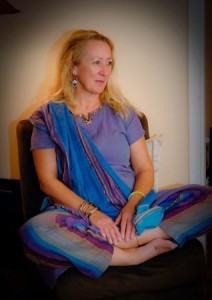
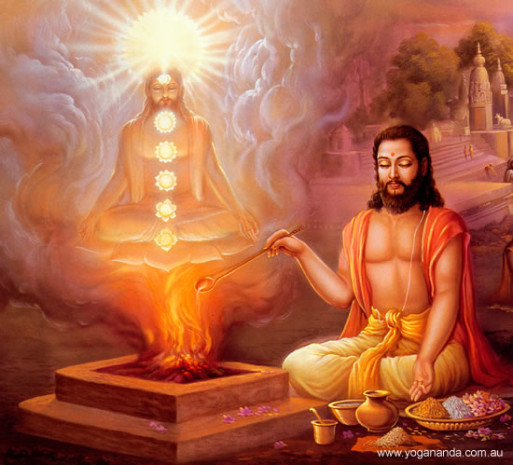
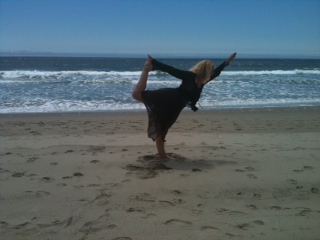
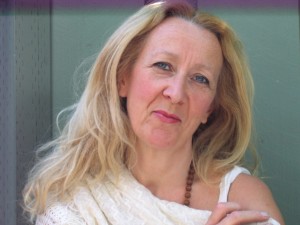
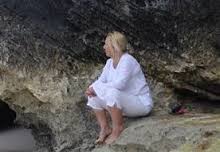
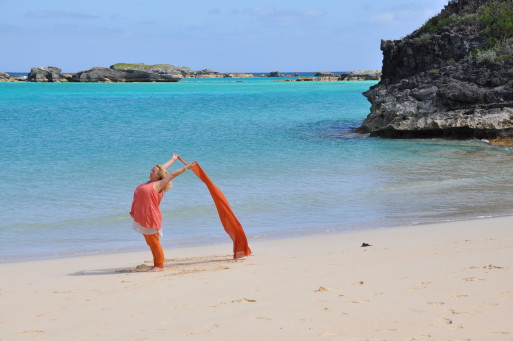



 First the Wealth Gap, Now the U.S. Has a Growing Health Gap
First the Wealth Gap, Now the U.S. Has a Growing Health Gap

 Our Annual Seven Holiday Gifts for Someone Who Is Grieving, 2024 Edition
Our Annual Seven Holiday Gifts for Someone Who Is Grieving, 2024 Edition














